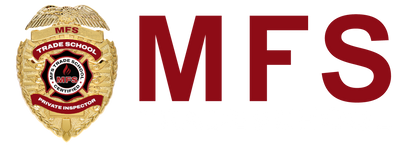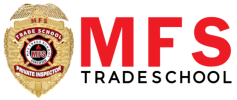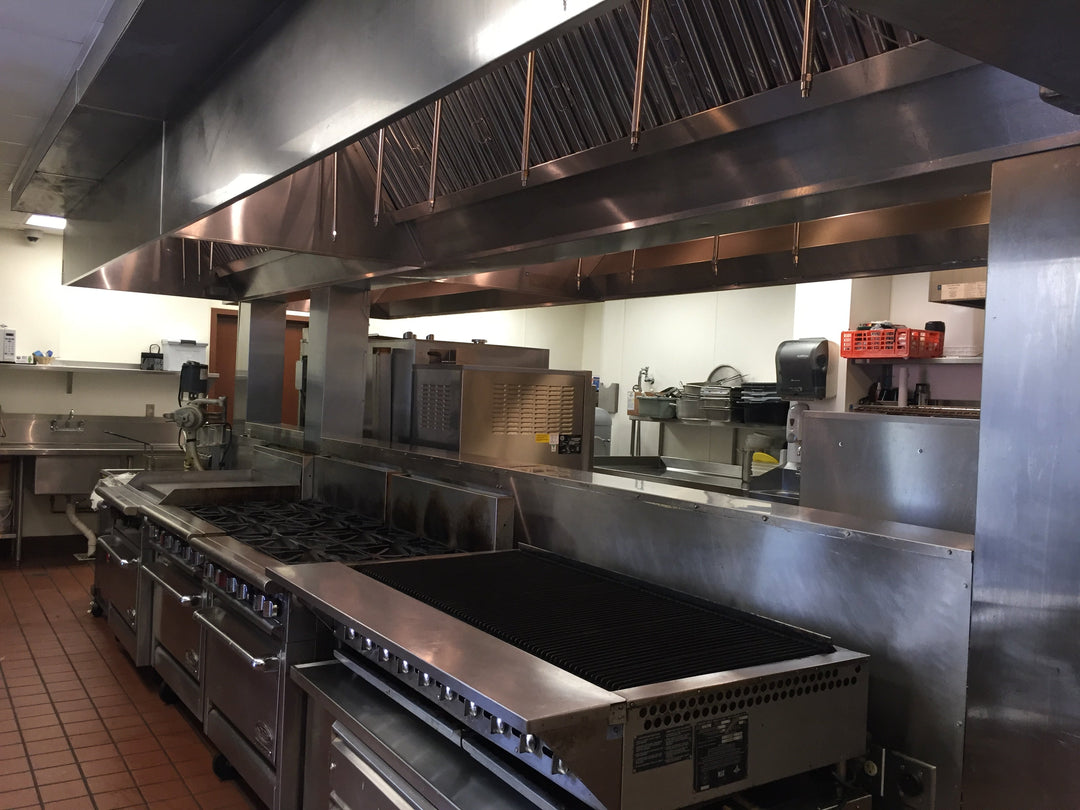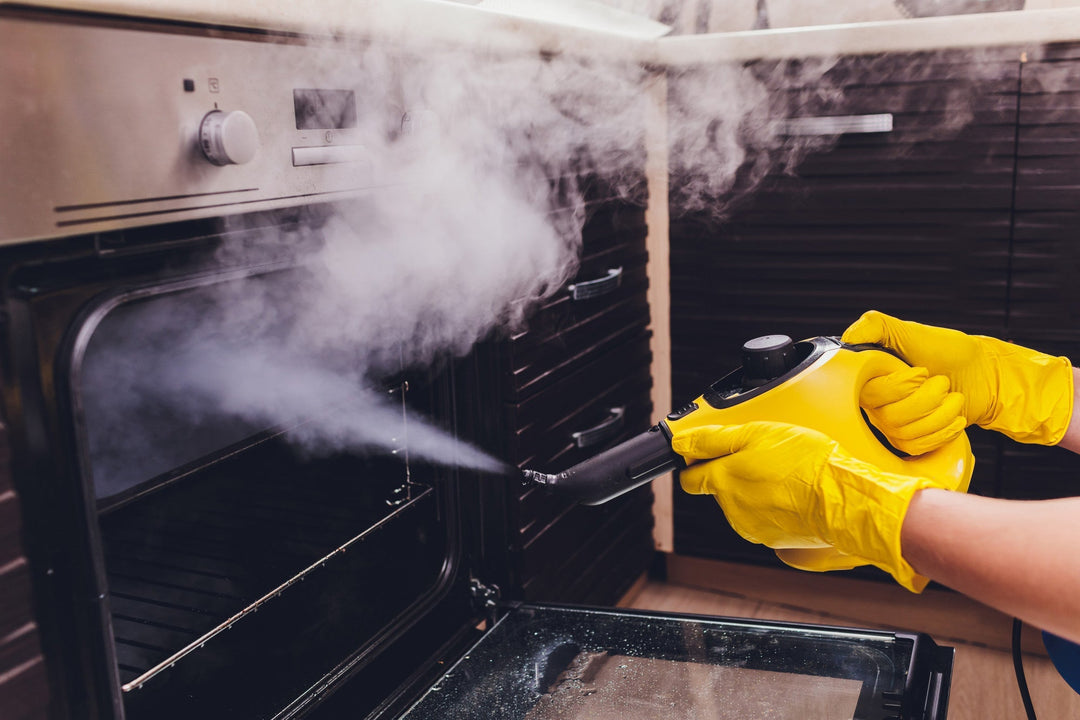Staff Training 101: Building a Safety-Conscious Kitchen Team

A safety-conscious kitchen team is essential for any successful food service operation. Every day, kitchen staff face potential dangers - from sharp knives and hot surfaces to slippery floors and heavy equipment. Creating a culture of safety through comprehensive staff training is not only about preventing accidents but also about establishing a foundation for excellence in operations.
Staff training is the key to kitchen safety, empowering team members with:
- Knowledge of how to handle equipment properly
- Understanding of food safety protocols
- Ability to identify potential hazards in the workplace
- Skills to respond effectively in emergencies
The benefits of a well-trained, safety-focused kitchen team go beyond just preventing accidents. When staff members work confidently in a safe environment, they:
- Stay productive
- Consistently deliver high-quality food
- Avoid expensive damage to equipment
- Lower insurance costs
- Foster a positive atmosphere at work
A kitchen that prioritizes safety through proper staff training experiences fewer disruptions, smoother operations, and better food quality. Investing in comprehensive safety training leads to fewer workplace incidents, improved staff retention, and happier customers.
In this article, we'll explore the essential components of building a safety-conscious kitchen team. We'll start by looking at the different roles and responsibilities that contribute to a successful kitchen operation.
One crucial aspect of ensuring kitchen safety is understanding how to handle and use various equipment correctly. For example, using an MFS Electrostatic Misting Fogger can greatly enhance sanitation processes in the kitchen. This fogger operates on batteries and has a powerful blower that can reach up to 8 feet away, allowing it to mist a room measuring 14' x 20' in just seconds. This makes it an efficient tool for maintaining cleanliness.
In addition to knowing how to handle equipment, it is also important to understand specific operational procedures such as cooking oil filtration. This process not only prolongs the lifespan and quality of cooking oil but also plays a vital role in ensuring profitability and enhancing the overall dining experience.
Furthermore, certain maintenance tasks like kitchen hood cleaning are often surrounded by misconceptions. It is crucial to debunk these myths and grasp the facts behind proper maintenance and safety procedures in order to create a secure working environment.
By focusing on these key areas - mastering equipment handling techniques, comprehending operational procedures such as cooking oil filtration, and dispelling myths surrounding maintenance tasks - we can cultivate a more safety-conscious kitchen team that not only prevents accidents but also improves overall efficiency in operations.
Understanding Roles and Responsibilities in the Kitchen
A well-functioning kitchen operates like a precision machine, with each staff member playing a distinct role in the culinary symphony. Let's break down the essential kitchen positions and their safety responsibilities:
1. Executive Chef and Sous Chef
- Lead kitchen operations and menu planning
- Enforce safety protocols and maintain quality standards
- Monitor staff compliance with food handling procedures
- Conduct regular safety inspections
2. Line Cooks
- Handle direct food preparation and cooking
- Maintain cleanliness of cooking stations
- Practice proper knife handling and equipment operation
- Monitor food temperatures during preparation
3. Prep Cooks
- Execute mise en place duties
- Store ingredients at appropriate temperatures
- Practice safe cutting and chopping techniques
- Clean and sanitize prep areas, using effective freezer cleaners when necessary.
4. Pastry Chef and Bakers
- Operate specialized baking equipment
- Handle hot ovens and mixing machinery
- Store perishable ingredients properly
- Maintain allergen awareness in dessert preparation
5. Kitchen Porters and Dishwashers
- Maintain kitchen cleanliness, which may involve using pressure washing hoses for thorough cleaning (like this 100ft one)
- Handle chemical cleaning agents safely
- Operate dishwashing equipment
- Manage waste disposal
Each role requires specific safety training tailored to their daily tasks. Your kitchen staff needs clear understanding of:
- Personal protective equipment requirements
- Safe operation of role-specific equipment
- Cross-contamination prevention methods
- Emergency response procedures relevant to their station
Regular safety audits help ensure each team member maintains these standards within their designated responsibilities. Additionally, it's crucial to follow seasonal maintenance tips for kitchen exhaust systems to keep them running efficiently and safely year-round.

Emphasizing Health and Safety Regulations
Health and safety regulations are crucial for maintaining a safe kitchen environment. It is important for your kitchen staff to have a thorough understanding of these essential protocols:
Critical Food Safety Regulations:
- Maintain food at safe temperatures (below 40°F or above 140°F)
- Store raw meats separate from ready-to-eat foods
- Label and date all stored items
- Monitor expiration dates religiously
Food Handling Best Practices:
- Wash hands thoroughly for 20 seconds with soap and hot water
- Use separate cutting boards for different food types
- Change gloves between tasks
- Clean and sanitize work surfaces between preparations
Sanitation Standards:
- Follow the three-sink method: wash, rinse, sanitize
- Use appropriate chemical concentrations for cleaning
- Clean equipment after each use
- Implement daily, weekly, and monthly cleaning schedules
Regular kitchen exhaust cleaning can greatly improve health ratings and ensure compliance with health department standards. It is important to include this practice in your sanitation standards.
Emergency Response Protocols:
- Keep first aid kits fully stocked and easily accessible
- Post emergency contact numbers in visible locations
- Install and maintain fire extinguishers at key points
- Establish clear evacuation routes
Your kitchen staff must understand that these regulations are not just rules, but rather safeguards that protect both your team and your customers. Regular safety audits can help identify areas that need attention, while documented procedures ensure consistent application of these standards.
Training should include hands-on demonstrations of proper techniques, such as correct handwashing procedures and fire extinguisher operation. Each staff member should know the location of emergency equipment and understand their role in various emergency situations.
In addition, maintaining restaurant cleanliness is essential for ensuring the health and safety of customers. Health inspectors assess restaurants based on strict cleanliness standards, which are vital for customer satisfaction and public health.
Developing Communication and Teamwork Skills in the Kitchen
Clear communication is essential for kitchen safety. Simple phrases like "behind you" or "hot pan coming through" can prevent serious accidents and injuries in fast-paced kitchen environments.
Essential Communication Practices:
- Use standardized kitchen terminology
- Call out hazardous situations immediately
- Maintain consistent volume and clarity
- Acknowledge instructions with verbal confirmation
Strong teamwork creates a safety net where staff members look out for each other. Cross-training kitchen roles helps team members understand the challenges and safety concerns of each position.
Building Team Cohesion:
- Rotate staff through different stations during training
- Pair experienced staff with newcomers
- Create shared responsibility for safety checks
- Schedule regular team meetings to discuss safety concerns
Kitchen teams can strengthen their safety practices through daily pre-shift briefings. These meetings provide opportunities to:
- Review potential hazards
- Share safety tips
- Address concerns
- Coordinate movements during busy hours
Establishing clear communication channels between different kitchen stations reduces confusion and prevents accidents. Hand signals, verbal cues, and standardized protocols help maintain order during busy service periods.
Bridging Front-of-House and Back-of-House Collaboration for Safety
Successful kitchen safety depends on seamless coordination between front-of-house and back-of-house teams. Here's how you can create effective collaboration:
1. Shared Communication Systems
- Implement standardized hand signals for hot plates and heavy items
- Use designated zones for order pickup to prevent collisions
- Install clear signage for wet floors and maintenance areas
2. Cross-Training Benefits
- Train servers in basic kitchen safety protocols
- Teach kitchen staff proper dining room navigation
- Practice coordinated responses to food allergies
3. Safety Checkpoints
- Create designated spots for servers to alert kitchen staff about incoming orders
- Set up clear paths for food runners to prevent accidents
- Establish specific locations for cleaning equipment storage
4. Team Integration
- Schedule joint safety briefings for both teams
- Conduct combined emergency response drills
- Share safety incident reports across departments
These collaborative practices create a unified approach to safety, reducing accidents and improving service flow between kitchen and dining areas.
Incorporating Situational Awareness into Training Programs
Situational awareness transforms kitchen safety from reactive to proactive. Your staff needs to develop a sixth sense for potential hazards before they become accidents.
Key Areas of Focus:
- Environmental Scanning: Train staff to regularly scan their workspace for potential hazards like wet floors, misplaced equipment, or unsafe storage practices
- Risk Assessment: Teach quick decision-making skills to evaluate the severity and likelihood of potential accidents
- Pattern Recognition: Help staff identify common scenarios that lead to accidents
Training Exercises:
- Hazard Spotting Games: Create scenarios where staff identify potential risks in their work area
- What-If Scenarios: Present real-world situations and ask staff to describe appropriate responses
- Safety Walks: Schedule regular kitchen tours focused on identifying potential safety concerns
Red Flags to Watch:
- Unusual sounds from equipment
- Changes in normal workflow patterns
- Unfamiliar smells
- Equipment performing differently than usual
- Staff showing signs of fatigue or distraction
Practical drills and regular refresher sessions help maintain high levels of situational awareness. Your team should practice these skills daily, making them second nature in their routine work.

Providing Continuous Education for Kitchen Safety Practices
Safety education in commercial kitchens requires constant reinforcement through structured learning programs. Regular training sessions keep safety protocols fresh in staff members' minds and introduce updated industry standards.
Key Components of Ongoing Safety Education:
- Monthly safety meetings focused on specific topics
- Quarterly hands-on demonstrations of safety equipment
- Annual certification renewals
- Weekly safety briefings during pre-shift meetings
Effective Training Methods:
- Video-based learning modules
- Interactive workshops
- Peer-to-peer mentoring programs with a focus on sharing best practices and experiences
- Safety challenge competitions
Create a digital library of safety resources accessible to all staff members. Include training videos, safety manuals, and quick reference guides for immediate access during shifts.
Track individual staff progress through safety certifications and training completion. Implement a reward system that recognizes staff members who consistently demonstrate safety excellence and participate in additional training opportunities.
Consider partnering with safety consultants or industry experts to provide specialized training sessions. These external perspectives bring fresh insights and help maintain high safety standards across your kitchen operations. Additionally, leveraging resources from organizations like Institute for Healthcare Improvement (IHI) can provide valuable insights into maintaining high safety standards, which can be adapted to the kitchen environment.
Fostering a Culture of Safety Through Leadership in the Kitchen
Leadership sets the foundation for kitchen safety culture. When kitchen managers actively demonstrate safety practices, staff naturally follow suit. Here's how leaders can build a safety-first environment:
1. Lead by Example
- Wear proper safety equipment
- Follow protocols consistently
- Address safety concerns promptly
2. Create Open Communication Channels
- Implement anonymous reporting systems to enhance employee voice
- Hold regular safety meetings
- Recognize staff who report hazards
3. Establish Clear Accountability
- Define safety responsibilities
- Document incident responses
- Track safety improvements
Leaders can strengthen safety culture by:
- Celebrating safety milestones
- Providing immediate feedback
- Including safety metrics in performance reviews
- Investing in updated safety equipment
- Supporting staff who pause work for safety concerns
A strong safety culture emerges when leadership consistently prioritizes protection over production speed. This approach creates an environment where staff feel empowered to make safety-conscious decisions without fear of repercussions, which is essential for starting a culture of safety in the workplace.
Practical Training Components for Enhancing Safety Skills Among Kitchen Staff
Hands-on training sessions create lasting impact and build muscle memory for essential safety practices. Trade schools are bridging America's skills gap, providing practical training programs that focus on real-world applications. Here's what your practical training program should include:
1. Equipment Operation Training
- Step-by-step demonstrations of proper equipment startup and shutdown procedures
- Guided practice sessions with safety features and emergency shutoff mechanisms
- Documentation of common equipment malfunctions and troubleshooting steps
2. Safety Drills and Simulations
- Fire extinguisher operation practice using training equipment
- Mock emergency evacuation scenarios
- First aid response simulations with certified instructors
3. Skill-Building Exercises
- Proper knife handling and maintenance workshops
- Safe lifting and carrying techniques practice
- Chemical handling and storage demonstrations
4. Real-Time Feedback Sessions
- Video recording of staff performing tasks for review
- Peer-to-peer observation and feedback
- Immediate correction of unsafe practices during training
Regular practice sessions reinforce these safety skills. Staff members gain confidence through repeated exposure to proper techniques under supervised conditions. Training documentation tracks individual progress and identifies areas needing additional focus.
Addressing Specific Kitchen Safety Topics During Training Sessions
Safety training sessions must tackle specific hazards kitchen staff encounter daily. Here's a detailed breakdown of essential safety topics:
Proper Lifting Techniques
- Keep your back straight
- Bend at the knees
- Hold heavy items close to your body
- Ask for help with loads over 50 pounds
- Use mechanical aids when available
Hot Surface Management
- Use appropriate heat-resistant gloves
- Maintain clear verbal warnings when carrying hot items
- Place warning signs near heated surfaces
- Keep pot handles away from open flames
- Allow equipment to cool before cleaning
Additional Critical Areas
- Chemical handling and storage protocols
- Proper knife grip and cutting techniques
- Electrical safety around kitchen equipment
- Slip-resistant footwear requirements
- Personal protective equipment usage
Regular practice sessions help staff master these safety techniques. Hands-on demonstrations allow team members to perfect their form under supervision. Safety checklists posted in key areas serve as constant reminders of proper procedures.
Integration of Professional Cleaning Services in Maintaining Kitchen Safety Standards
Professional cleaning services play a vital role in maintaining kitchen safety standards beyond regular staff cleaning duties. A dedicated cleaning services company brings specialized expertise and industrial-grade equipment to tackle deep cleaning requirements.
Key benefits of professional cleaning services:
- Steam cleaning technology eliminates 99.9% of bacteria and pathogens
- Industrial-grade degreasers remove stubborn grease buildup
- Specialized equipment reaches hard-to-access areas
- Documentation of cleaning processes for health inspections
- Reduced risk of cross-contamination
Restaurant cleaning professionals work during off-hours to minimize disruption while providing thorough sanitization of:
- Kitchen exhaust systems
- Floor drains and grease traps
- Walk-in coolers and freezers
- Food preparation surfaces
- Storage areas and shelving
A professional cleaning service creates a maintenance schedule tailored to your kitchen's specific needs. This systematic approach ensures consistent cleanliness standards and helps identify potential safety hazards before they become serious issues.
Regular deep cleaning by qualified professionals complements daily staff cleaning routines and reinforces your commitment to food safety and workplace health standards. For those interested in advancing their career in this field, MFS Trade School offers comprehensive training and certification programs that cover various aspects of restaurant cleaning and maintenance, including specialized courses on exhaust cleaning. Such professional training can greatly enhance the effectiveness of the cleaning process, ensuring higher safety standards in the kitchen.

Importance of Regular Kitchen Hood Cleaning for Fire Prevention Measures
Kitchen exhaust hood cleaning is a critical safety measure in commercial kitchens. Grease accumulation in hood systems creates a significant fire hazard, making professional hood cleaning services essential for risk management. For effective strategies on kitchen hood cleaning that prevent fire hazards, it's important to understand the key benefits of regular cleaning.
Key Benefits of Regular Hood Cleaning:
- Reduces fire risks by removing flammable grease deposits
- Maintains proper ventilation efficiency
- Extends equipment lifespan
- Ensures compliance with fire safety codes
- Improves air quality in the kitchen
Professional kitchen hood cleaning involves thorough inspection and cleaning of:
- Hood filters
- Exhaust fans
- Ductwork systems
- Grease containment units
The National Fire Protection Association (NFPA) recommends specific cleaning frequencies:
- Monthly: High-volume cooking operations
- Quarterly: Moderate-volume operations
- Semi-annually: Low-volume operations
A clean exhaust hood system prevents dangerous flash fires and protects your staff, equipment, and property. However, kitchen exhaust hood cleaning requires specialized tools and expertise to access hard-to-reach areas where grease accumulates. This is where industrial-grade degreasers come into play, as they ensure thorough removal of all combustible residues.
Professional hood cleaning services use these industrial-grade degreasers and pressure washing equipment to ensure complete cleanliness of the exhaust system. It's crucial to remember that such tasks should only be performed by trained professionals. To become one, consider enrolling in a comprehensive training program like the one offered by MFS Trade School, which provides certification and industry knowledge.
Regular kitchen exhaust hood cleaning is not just about maintaining hygiene; it's a vital part of fire prevention measures that safeguard lives and properties in commercial kitchens.
Utilizing Proper Cleaning Equipment to Enhance Overall Safety Within Commercial Kitchens
Professional cleaning tools play a vital role in maintaining kitchen safety standards. The right equipment selection impacts both cleaning efficiency and staff protection during maintenance tasks.
Essential Commercial Kitchen Cleaning Equipment:
- Heavy-duty floor scrubbers with non-slip handles
- Chemical-resistant gloves rated for industrial cleaning agents
- Color-coded cleaning tools to prevent cross-contamination
- Extendable cleaning wands for hard-to-reach areas
- HEPA-filtered vacuum systems for dust and debris removal
Your cleaning equipment arsenal must include specialized tools for different surfaces:
- Stainless steel cleaners with non-scratch pads
- Degreasing sprayers for hood systems
- Anti-bacterial cleaning solutions with proper dilution systems
- Microfiber mops designed for commercial kitchen floors
Staff training on proper equipment handling reduces workplace injuries and ensures effective cleaning results. Each team member needs hands-on practice with cleaning tools, understanding proper chemical dilution ratios, and learning correct equipment storage protocols.
Regular equipment maintenance checks prevent malfunctions that could compromise cleaning effectiveness or staff safety. Replace worn-out tools promptly and keep detailed records of equipment inspections and replacements.
Moreover, adopting advanced virus disinfection methods is essential in today's context of rising foodborne illnesses and viral outbreaks. Implementing effective cleaning protocols not only protects customers but also enhances the overall safety within commercial kitchens.
Starting a Cleaning Business Focused on Providing Specialized Services for Commercial Kitchens
Starting a specialized cleaning services company for commercial kitchens presents a lucrative business opportunity. The demand for industrial cleaning services continues to grow as restaurants prioritize safety and compliance.
Key Steps to Launch Your Kitchen Cleaning Business:
- Obtain necessary licenses and certifications for commercial kitchen cleaning
- Invest in professional-grade cleaning equipment and supplies, such as those offered in our Gold Equipment Package for Kitchen Exhaust Hood Cleaning
- Create detailed service packages targeting different kitchen sizes
- Develop standardized cleaning protocols aligned with health regulations
- Build relationships with restaurant owners and food service managers
Profitable Service Areas to Consider:
- Deep cleaning of kitchen equipment and surfaces
- Hood system maintenance and cleaning
- Grease trap services
- Floor care and maintenance
- Emergency cleaning response
Your cleaning business can stand out by offering staff training programs to kitchen teams, helping them maintain cleanliness between professional cleanings. This approach creates additional revenue streams while positioning your company as an industry expert in commercial kitchen safety.
To further enhance your business growth, consider seeking mentorship. As highlighted in this article about how mentorship can accelerate your cleaning business growth, tapping into the wisdom of seasoned industry experts can significantly help navigate challenges and seize opportunities.
Remember to establish clear pricing structures based on kitchen size, service frequency, and specific cleaning requirements. Consider offering monthly service contracts to ensure steady income.






